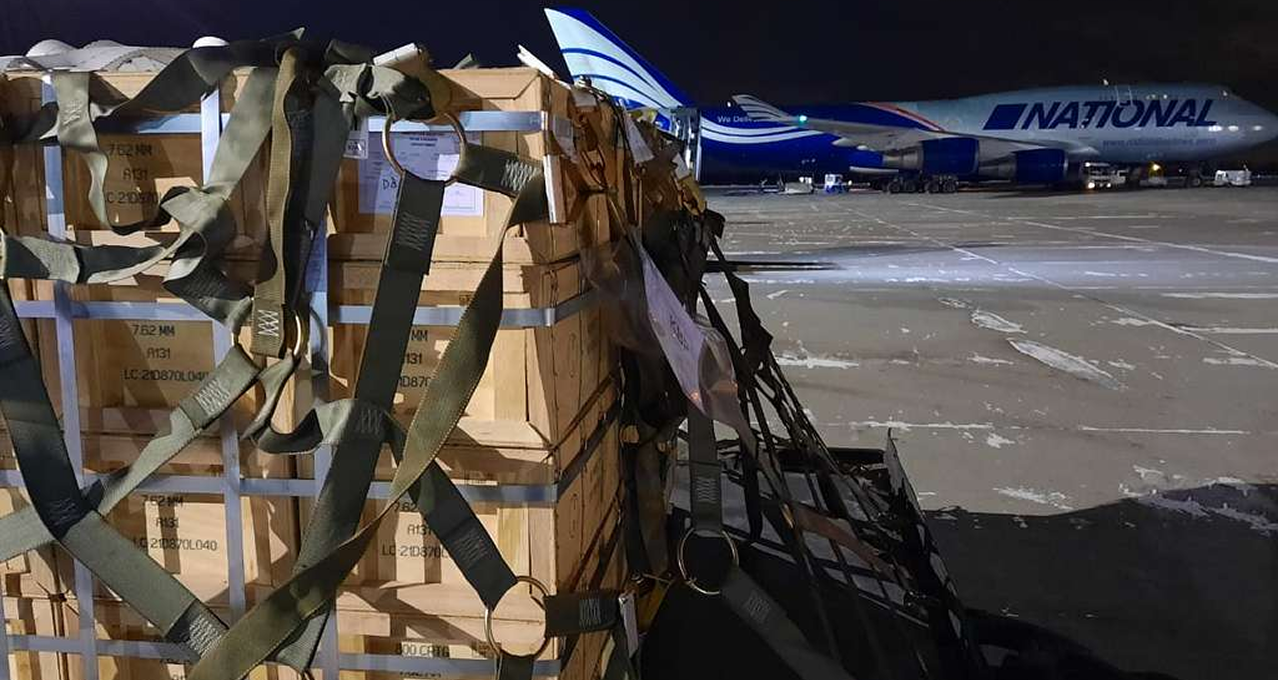


Russia is increasingly demonstrating its capability to launch massive missile and drone strikes against Ukrainian cities. In Kyiv alone, over 2,000 buildings have been damaged, hundreds have died, and thousands have been injured since the invasion began. Zaporizhzhia, Dnipro, Kharkiv, Poltava — nearly every city, particularly in the eastern and southern regions, regularly endures indiscriminate shelling targeting civilian infrastructure and terrorizing the peaceful population.
Against this backdrop, news emerged in the domestic information space that the U.S. is suspending part of its support to Ukraine. Our material delves into how unpleasant this development is, and what — and who — is behind it.
Ukraine is waging an asymmetrical war. The unpleasant reality is that Ukraine’s enemy possesses a vast quantity of Soviet-era weaponry, an apolitical and impoverished population, and the financial means to ensure this populace largely voluntarily joins the Russian Armed Forces. Another unpleasant fact is that the Ukrainian state’s capacity to defend its citizens and territories requires constant support from Western partners. This includes U.S. support, which had continued since the initial predictions of Kyiv’s rapid fall proved false, only to abruptly cease without warning to either the Ukrainian or European sides.
Throughout the war, the U.S. has served as both the key donor of military aid, providing over $65 billion, and a facilitator of the aid process to Ukraine from other nations. However, a change in leadership in the White House has led to an expected decrease in America’s involvement in countering Russia, culminating in the decision to suspend a portion of aid.
Despite the suspension being labeled “partial,” Ukraine may not receive a rather substantial list of armaments. This primarily concerns 30 PAC-3 interceptor missiles for Patriot systems, designed to engage ballistic missiles, which are significantly more complex targets and thus extremely difficult to shoot down with other types of weaponry. Although, “on paper,” S-300 air defense systems, primarily in service with the UAF, are capable of engaging ballistic targets, this capability is not practically realized as these systems were designed for different objectives. For understandable reasons, the UDF does not disclose its levels of anti-missile weaponry stockpiles. However, it is telling that not a single ballistic missile was intercepted during the last shelling of Kyiv on July 4.
Among other halted armament supplies are 8,500 155mm artillery shells, AIM and AGM-114 Hellfire air-to-ground missiles, HIMARS system rockets etc. Evidently, such an action will negatively impact the Ukrainian army’s ability to counter the aggressor. However, the most critical consequence is the halt of PAC-3 deliveries, as they have no analogs and are produced exclusively in the U.S. Their loss will mean that the civilian populations of regularly shelled cities will become even more vulnerable, and the number of casualties will increase.
The starting point for a full assessment of the consequences of halting American aid is the question of this “suspension’s” duration. The reality of supplying the Ukrainian military (or any army during wartime) is one of continuous resource scarcity. Even if a particular unit has a surplus of a certain resource, it is used to compensate for shortages of other assets. In other words, a reduction in supplies directly and negatively impacts the UDF’s capabilities even in the mid-term. While Ukraine possesses certain Western armament stockpiles, without regular replenishment from partners, these will be depleted within a few months, or in the case of, for example, 155mm shells (also supplied by European states and produced by the domestic MIC), they will become more critically scarce.
The decision to unilaterally suspend aid was made by U.S. Secretary of Defense Pete Hestet, a development that became known on Tuesday, July 1. This was preceded by a memorandum in which Hestet instructed the Joint Chiefs of Staff to review and report on all ammunition stockpiles. The official explanation, provided post-factum by spokespersons for the White House and the Pentagon, indicates that the decision is intended to “put America’s interests first,” thus aligning with Donald Trump’s declared “America First” doctrine. Another figure also responsible for this decision is Hestet’s Deputy for Policy, Elbridge Colby, who has repeatedly argued that supporting Ukraine dangerously depletes U.S. Army stockpiles, especially in light of a potential conflict in the Pacific region.
Furthermore, the suspension of aid is fully consistent with President Trump’s foreign policy course, which prioritizes domestic interests and aims to reduce what he perceives as excessive foreign expenditures. Such an approach often involves a review of international commitments and an emphasis on national self-sufficiency. This can be regarded as an attempt to reorient resources and attention from conflicts that do not pose a direct threat to the U.S. towards other strategically important directions.
At the same time, the decision came as a surprise even to American congressmen, and a substantial portion of the political establishment expressed disagreement. An assessment by a group of high-ranking military officials revealed that providing this aid package did not jeopardize U.S. defense capabilities; a similar opinion was also voiced by several congressmen. Although the data remains classified, the very fact of such fundamentally conflicting assessments indicates that Hestet’s decision is unlikely to be based solely on technocratic considerations of stock maintenance.
Donald Trump’s campaign rhetoric could well be regarded as isolationist. Although it is now clear, following Washington’s strikes on Iran, that America is not “wihdrawing” from international affairs, the White House no longer views the European theater of geopolitical confrontation as a priority, unlike the Pacific, whose importance has significantly grown over the past decade amidst escalating relations with China and an increasing number of military provocations from Beijing concerning Taiwan. Both Trump’s America and Biden’s America have consistently attached exceptional importance to East Asia in terms of national interest protection. Within this security focus, various officials, including the aforementioned Elbridge Colby, are calling for an end to the dispersion of forces in directions secondary to the “Chinese” one, suggesting that Europe could handle supporting Ukraine.
Another idea, threatening to Kyiv and prevalent in U.S. foreign policy circles in recent years, suggests that America could weaken China by detaching Iran and Russia from its influence. Under this approach, Ukraine is viewed as a “price” to be paid to the Kremlin for its betrayal of Beijing. The weakness of this strategy lies in ignoring reality: Russia is already extremely dependent on Beijing in terms of trade, resources, and technology. Even in the hypothetical event of such a “deal,” Washington would have no guarantees of Moscow fulfilling its obligations. Moreover, Roma traditoribus non premia; such short-sighted pragmatism would cast existential doubt on the entire security architecture that the U.S. has built over years — both outside and within NATO.
Nevertheless, the actual coercion of Ukraine into peace (capitulation) through pressure on military, financial, and political support fits entirely within the framework of such a strategy. Delays in arms supplies, blockages of aid packages in Congress, and covert approval of “peace initiatives” aligning with Russia’s vision — all these elements, although not presented as part of a strategic exchange, effectively create a situation where Ukraine is faced with a choice between defeat and concessions. Such an approach threatens to transform the conflict into a political conspiracy, where Ukraine’s fate is decided without its participation.
It is pertinent to note that the recent U.S. strikes on Iran and subsequent statements by President Trump, including remarks that sanctions could be reduced, represent a similar attempt to “pull” Tehran out of China’s camp through a formula that has long featured in U.S.-Iranian relations: sanctions relief in exchange for nuclear disarmament. Currently, the results are contrary, and the Islamic Republic’s cooperation with China is deepening.
Upon invading Ukraine, the Russian side planned a typical small, victorious war. According to their schemes, the destruction of Ukrainian defenses, followed by purges and pacification, was not to exceed a few months, with direct combat operations occupying only a fraction of that time. Against the backdrop of this strategy’s failure, the Kremlin shifted to another: a strategy of attrition. This aimed to prolong the conflict, banking on the West’s “fatigue” and the gradual cessation of support for Kyiv, which would leave Ukraine with no option but capitulation. From the very beginning, a key calculation of this plan was the election of Donald Trump as U.S. President in 2024. This strategy was indirectly confirmed by Medinsky in Istanbul when he drew an analogy to the Great Northern War.
Evidently, the bravado about a twenty-year war is irrelevant. The Russian economy is already showing signs of serious structural degradation and a significant downturn, with the prospect of hyperinflation, which would make long-term support for the war extremely difficult. However, such a move by the White House would be unequivocally interpreted as a verification of the chosen course of action, thus nullifying any previous efforts aimed at achieving peace, unless Washington decides to resume aid within the shortest possible time frame.
The unilateral decision to halt aid to Ukraine, while possibly stemming from pragmatic considerations, is detrimental to the American world. This sends a signal that diminishes trust in the U.S.-created security system and encourages America’s adversaries to engage in more active measures and continued pressure. This decision could only prolong the conflict and render it even bloodier due to the weakening of Ukraine’s defense capabilities.
The continued provision of U.S. military support to Ukraine remains uncertain. Domestic political struggles in Washington—including pressure from Congress and the risk of reviewing decisions, as already occurred with the aid suspension by Hestet’s department—could significantly influence future developments. Concurrently, key factors remain changes in Ukraine’s military needs on the front lines and its ability to expand its circle of external security partners, primarily, of course, among European states.
Kyiv and Europe find themselves in a situation where leaders in both Moscow and Washington primarily understand force. Only self-reliance can ensure the survival of a free Europe under such conditions. For the first time since the Cold War, fate demands that the Old World become a self-sufficient player in global politics.
© 2025 ALL RIGHTS ARE RESERVED